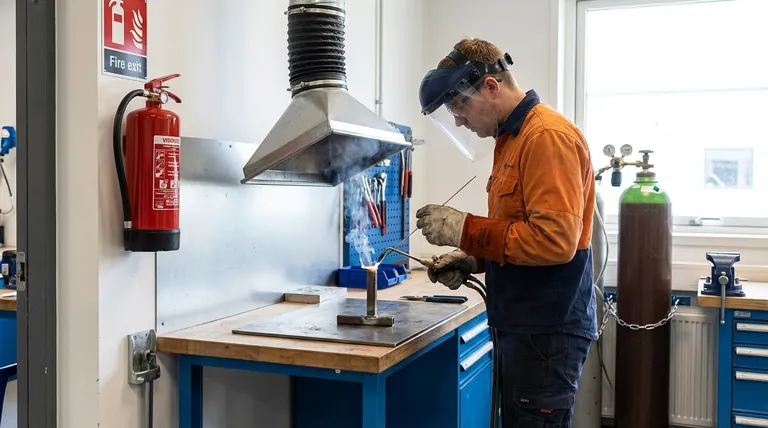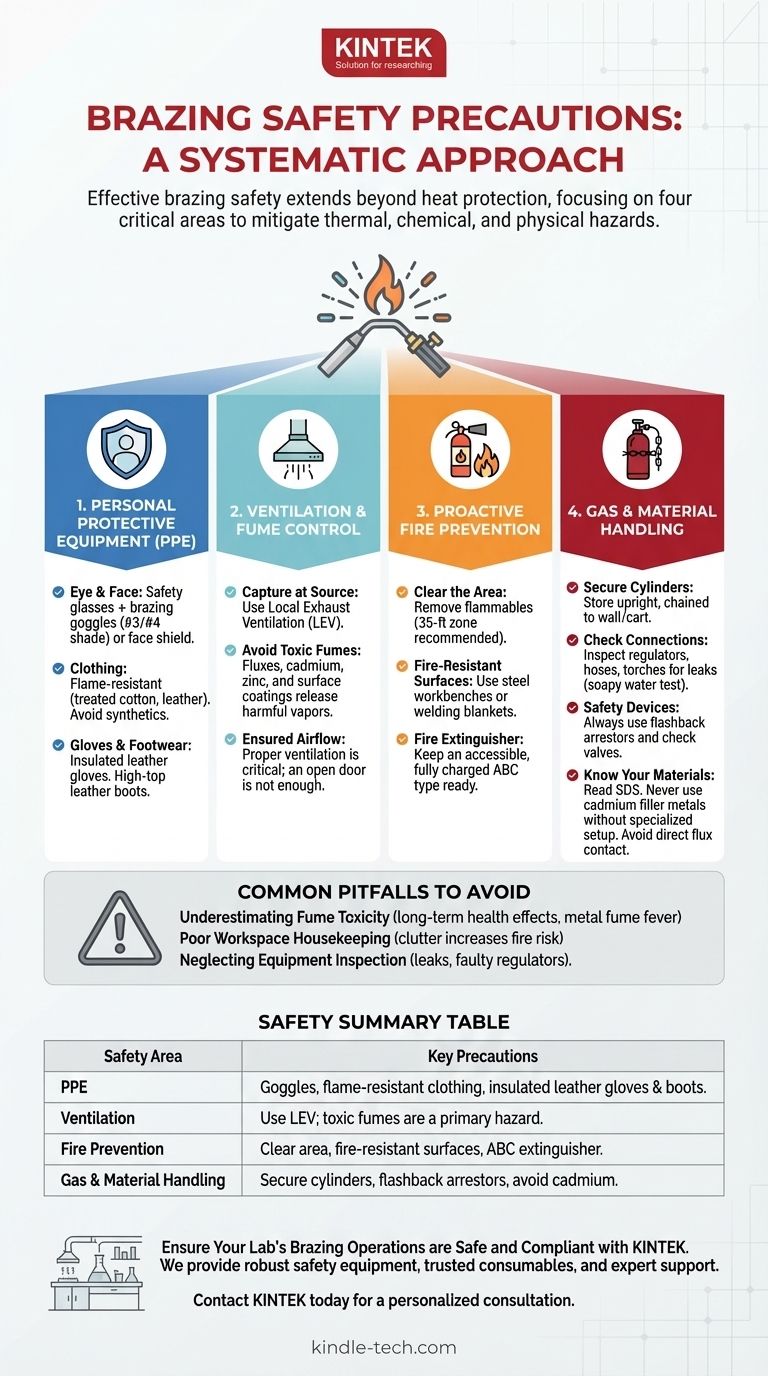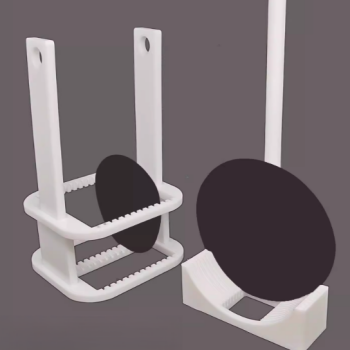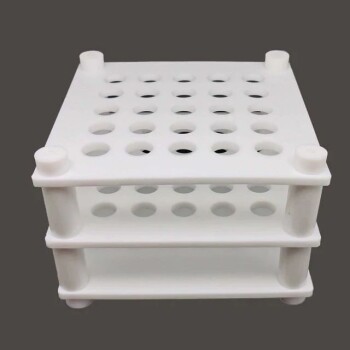Effective brazing safety is a systematic process that extends beyond simple heat protection, focusing on four critical areas: personal protective equipment (PPE), robust ventilation to control hazardous fumes, proactive fire prevention, and the correct handling of materials and compressed gas cylinders. These measures work in concert to protect operators from thermal, chemical, and physical hazards inherent to the process.
The most overlooked aspect of brazing safety is not the visible flame, but the invisible fumes. Protecting yourself from the heat is intuitive; consciously protecting yourself from the toxic byproducts of fluxes and filler metals requires deliberate engineering controls and consistent discipline.

The Three Pillars of Workplace Safety
True safety is built on a foundation of controlling the immediate environment. This involves protecting your body, managing the air you breathe, and preventing the ignition of surrounding materials.
Personal Protective Equipment (PPE)
Your first line of defense is what you wear. The goal is to create a barrier between you and the intense heat, UV radiation, and potential spatter from the brazing operation.
- Eye and Face Protection: Always wear safety glasses. For torch brazing, add brazing goggles or a face shield with a lens shade of #3 or #4 to protect against intense light.
- Flame-Resistant Clothing: Wear long-sleeve shirts and pants made from flame-resistant materials like treated cotton or leather. Avoid synthetic fabrics like polyester, which can melt and cause severe burns.
- Gloves and Footwear: Dry, insulated leather gloves are essential for handling hot materials and protecting against the heat of the torch. High-top leather boots protect your feet from sparks and falling objects.
The Critical Importance of Ventilation
Brazing filler metals and fluxes release potentially toxic fumes when heated. Without proper ventilation, these fumes can accumulate to hazardous levels, posing a significant respiratory risk.
- Fume Generation: Heating metals coated with oils, paints, or plating can release harmful vapors. More importantly, fluxes contain fluorides, and some filler metals contain cadmium or zinc, all of which are toxic when inhaled.
- Effective Airflow: Perform brazing in a well-ventilated area. The best practice is to use local exhaust ventilation (LEV), which captures fumes at the source and removes them from your breathing zone. An open door is not sufficient.
Proactive Fire Prevention
The combination of a high-temperature heat source and compressed flammable gases creates a significant fire risk. A safe workspace is a clean and prepared workspace.
- Clear the Area: Remove all flammable materials—such as wood, paper, rags, and flammable liquids—from the brazing area. A recommended clear zone is at least 35 feet.
- Use Fire-Resistant Surfaces: Work on a fire-resistant surface like a steel workbench. If working near combustible walls or floors, protect them with welding blankets or sheet metal.
- Keep an Extinguisher Ready: A suitable, fully charged fire extinguisher (typically an ABC type) must be easily accessible at all times. Know how to use it.
Managing Brazing-Specific Hazards
Beyond the general environment, the equipment and materials used in brazing present their own unique risks that require specific procedures.
Safe Handling of Gas Cylinders
For torch brazing, compressed gas cylinders are a primary hazard. They contain high-pressure gas that can be flammable and explosive if mishandled.
- Secure Storage: Cylinders must always be stored upright and secured with a chain or strap to a wall or cart to prevent them from falling.
- Proper Connections: Ensure regulators, hoses, and torches are in good condition and free of leaks. Check connections with a soapy water solution before use.
- Use Safety Devices: Always use flashback arrestors and check valves on your torch and regulators to prevent the reverse flow of gas and flame.
Understanding Material and Flux Dangers
The specific materials you work with dictate some of the most serious health risks. Always read the Safety Data Sheet (SDS) for your filler metals and fluxes.
- Filler Metal Toxicity: Never use filler metals containing cadmium unless you have highly specialized ventilation and training. Cadmium fumes are extremely toxic and can be fatal.
- Flux Hazards: Fluxes contain chemical compounds that can irritate the skin, eyes, and respiratory system. Avoid direct skin contact and ensure ventilation is sufficient to remove the fumes.
Common Pitfalls to Avoid
Complacency is the greatest threat to safety. Even experienced professionals can make mistakes by overlooking fundamental procedures.
Underestimating Fume Toxicity
The most common mistake is performing a "quick job" in a poorly ventilated space. The long-term health effects of inhaling metal and flux fumes are severe, and acute exposure can cause metal fume fever or poisoning.
Poor Workspace Housekeeping
A cluttered workspace filled with flammable debris is a fire waiting to happen. Maintaining a clean and organized area is a non-negotiable part of the process.
Neglecting Equipment Inspection
Failing to check for gas leaks in hoses or using a faulty regulator can lead to catastrophic failure. A pre-use inspection should be a mandatory, unbreakable habit.
Applying Safety to Your Environment
Your specific safety protocol will depend on the context of your work. Tailor your approach to your environment.
- If your primary focus is a production line: Your priority is engineering controls, such as dedicated brazing stations with built-in local exhaust ventilation and standardized procedures.
- If your primary focus is maintenance or field repair: Your priority is conducting a thorough pre-work hazard assessment of the area, ensuring it's clear of flammables, and using portable fume extraction systems.
- If your primary focus is a small workshop or hobby project: Your priority is establishing rigorous personal habits, never skipping PPE, and ensuring your space has more than adequate cross-ventilation.
A safe brazing operation is the direct result of a deliberate, disciplined, and informed approach to managing risk.
Summary Table:
| Safety Area | Key Precautions |
|---|---|
| Personal Protective Equipment (PPE) | Brazing goggles (#3/#4 shade), flame-resistant clothing, insulated leather gloves & boots. |
| Ventilation & Fume Control | Use local exhaust ventilation (LEV); toxic fumes from fluxes & filler metals are a primary hazard. |
| Fire Prevention | Clear 35-ft area of flammables, use fire-resistant surfaces, keep an ABC fire extinguisher ready. |
| Gas & Material Handling | Secure gas cylinders upright; use flashback arrestors; avoid cadmium-based filler metals. |
Ensure Your Lab's Brazing Operations are Safe and Compliant
Brazing is a critical process in many laboratory settings, but the risks of toxic fumes, fire, and equipment failure are real. KINTEK specializes in providing the reliable lab equipment and safety solutions you need to protect your team and your research.
We help you mitigate brazing risks by providing:
- Robust Safety Equipment: From fume extraction systems to personal protective equipment.
- Trusted Consumables: High-quality, safe filler metals and fluxes with clear Safety Data Sheets (SDS).
- Expert Support: Guidance on setting up safe brazing stations and establishing proper protocols.
Don't compromise on safety. Let our experts help you build a safer, more efficient lab environment.
Contact KINTEL today for a personalized consultation on your laboratory's brazing safety and equipment needs.
Visual Guide

Related Products
- 1700℃ Laboratory Quartz Tube Furnace with Alumina Tube Tubular Furnace
- Laboratory Sterilizer Lab Autoclave Vertical Pressure Steam Sterilizer for Liquid Crystal Display Automatic Type
- Laboratory Sterilizer Lab Autoclave Pulse Vacuum Lifting Sterilizer
- Vacuum Sealed Continuous Working Rotary Tube Furnace Rotating Tube Furnace
- Vacuum Dental Porcelain Sintering Furnace
People Also Ask
- How does a tube furnace work? Master Precise Thermal and Atmospheric Control
- What tube is used for tubular furnace? Choose the Right Material for Temperature & Atmosphere
- What precautions should be taken when using a tube furnace? Ensure Safe, Effective High-Temperature Processing
- What is a tubular furnace used for? Precision Heating for Material Synthesis & Analysis
- What are the benefits of a tube furnace? Achieve Superior Temperature & Atmosphere Control



















